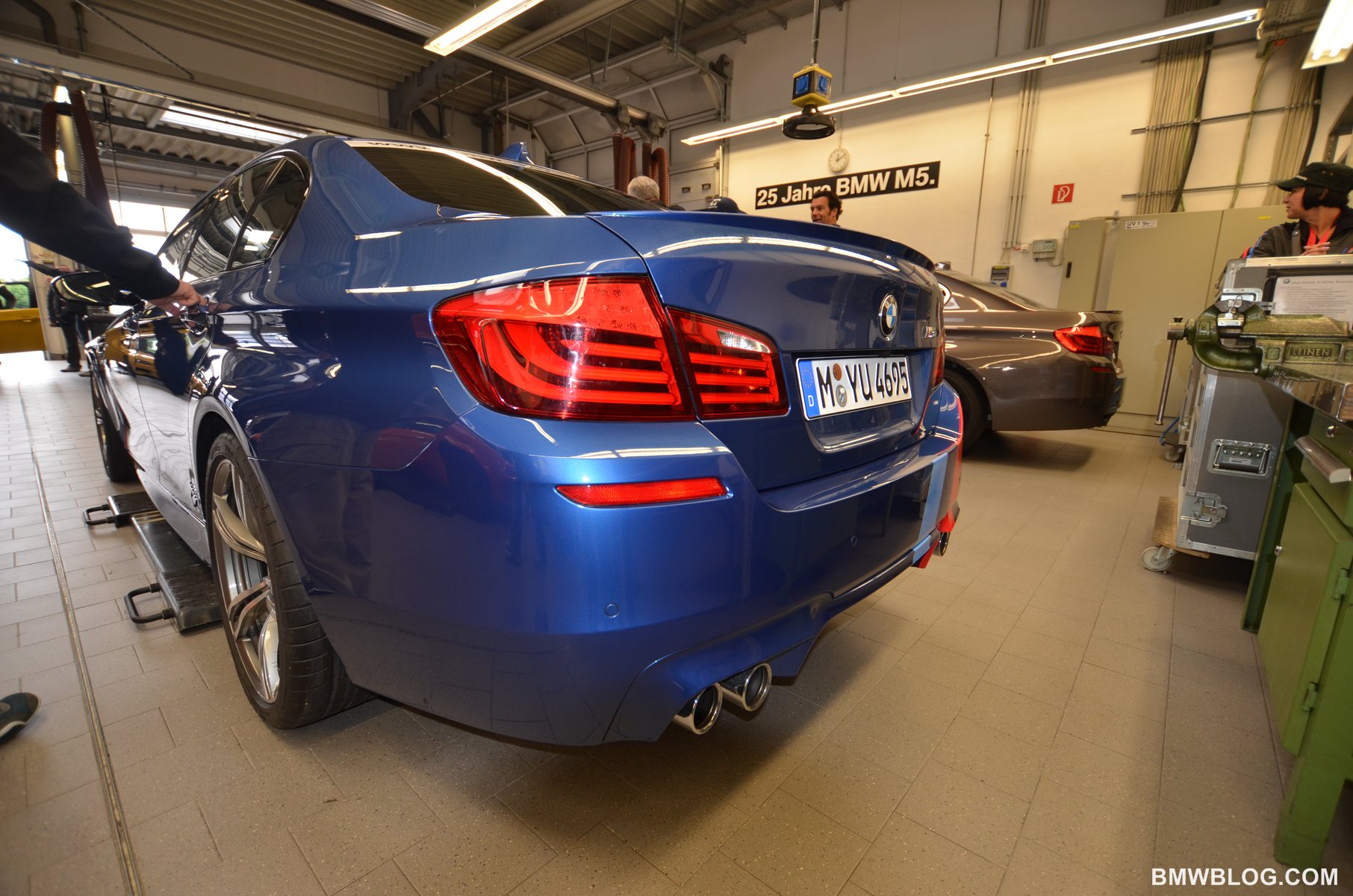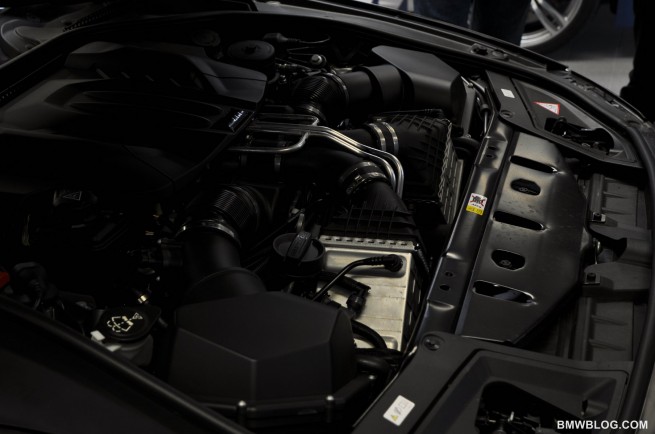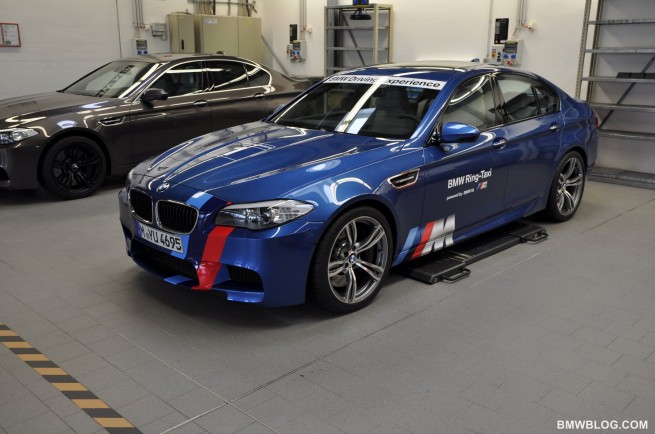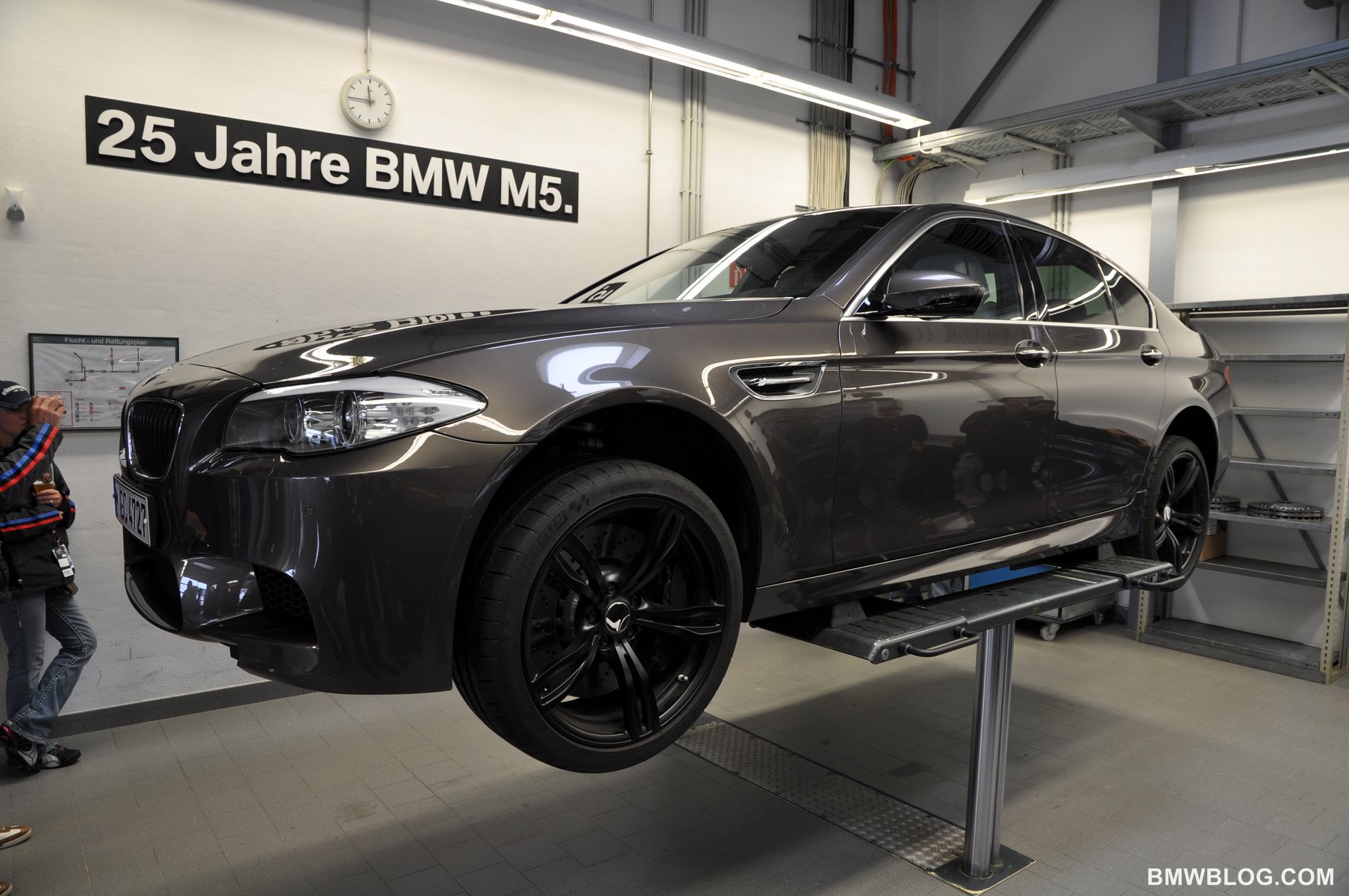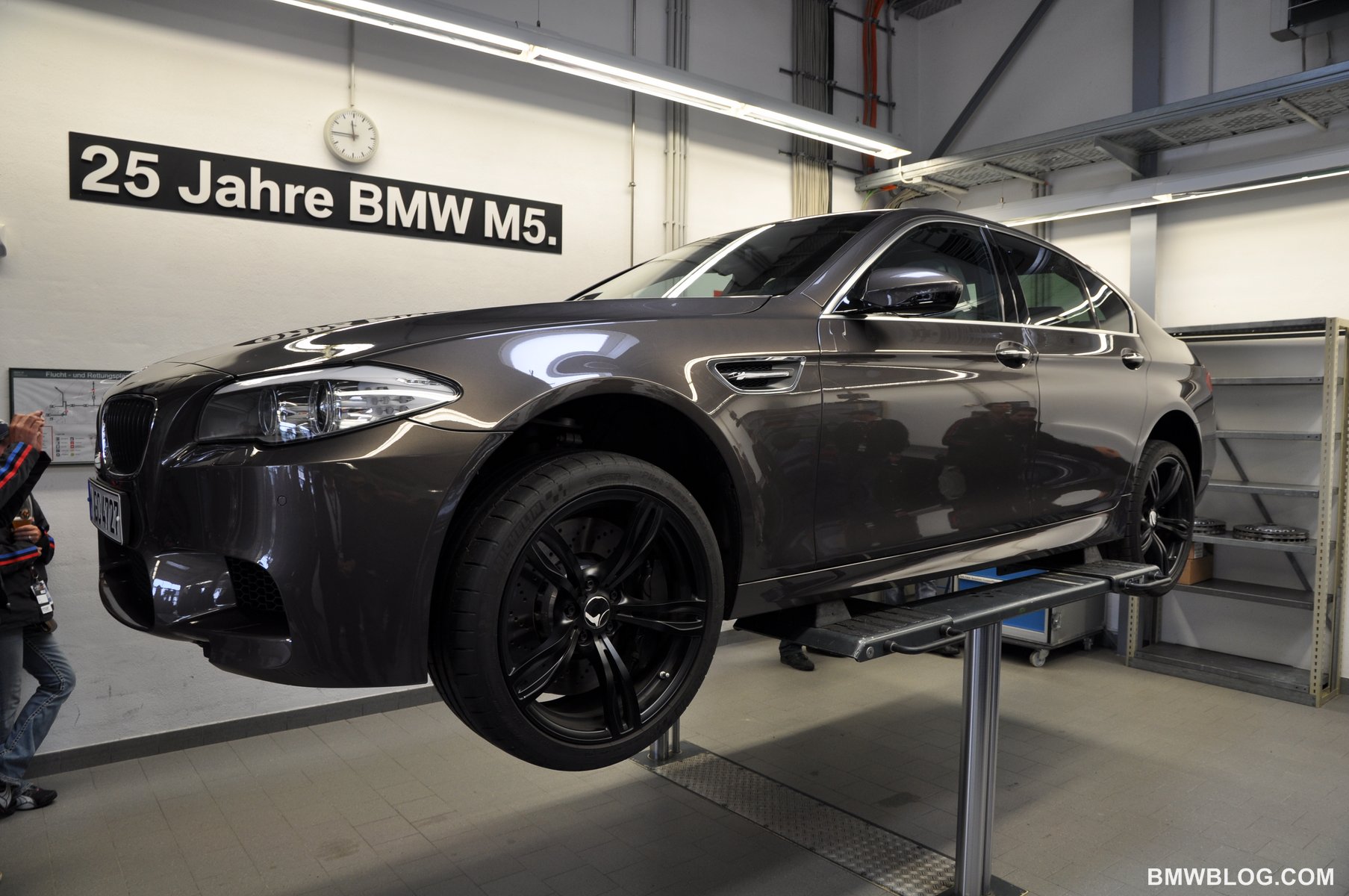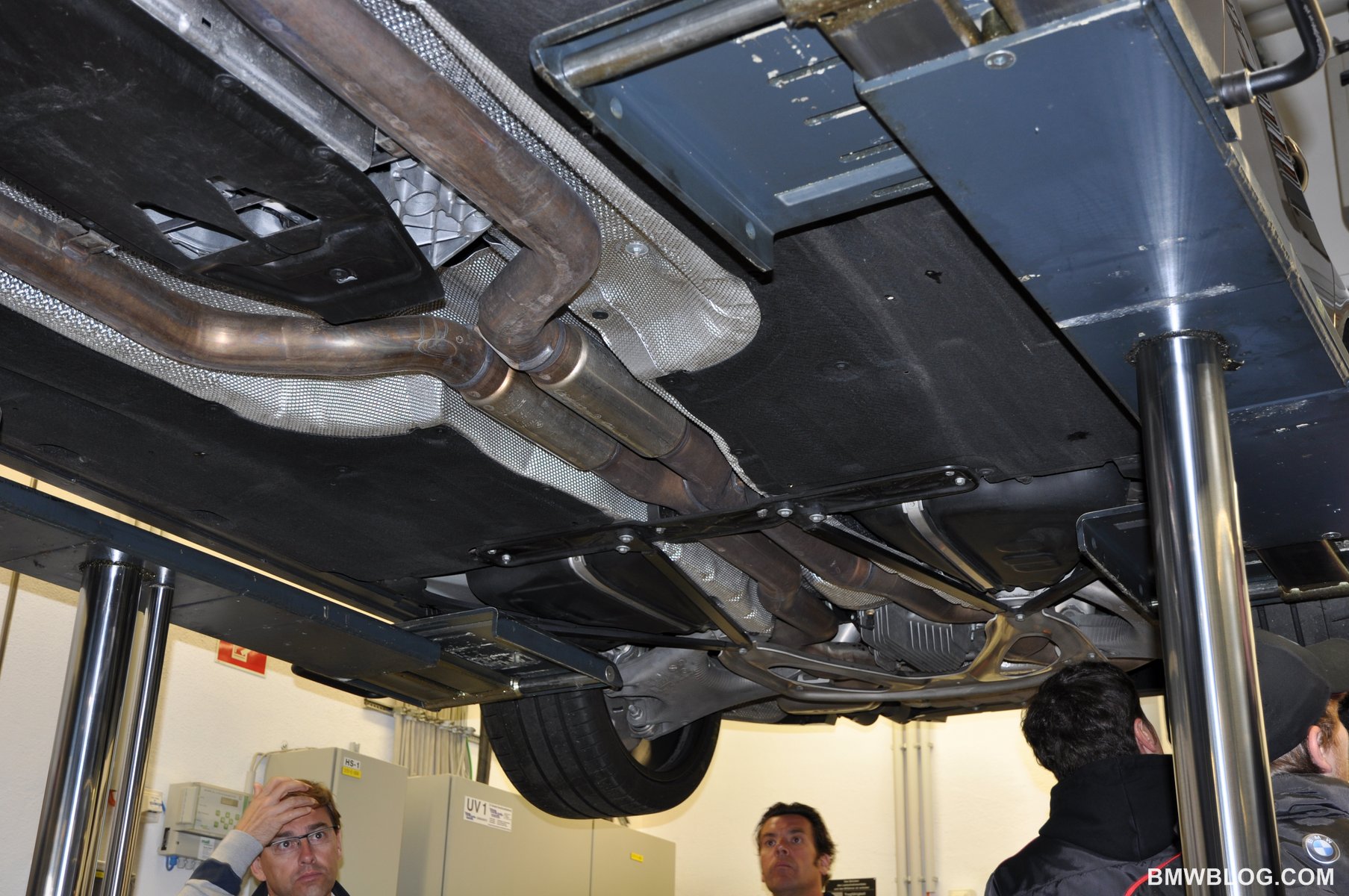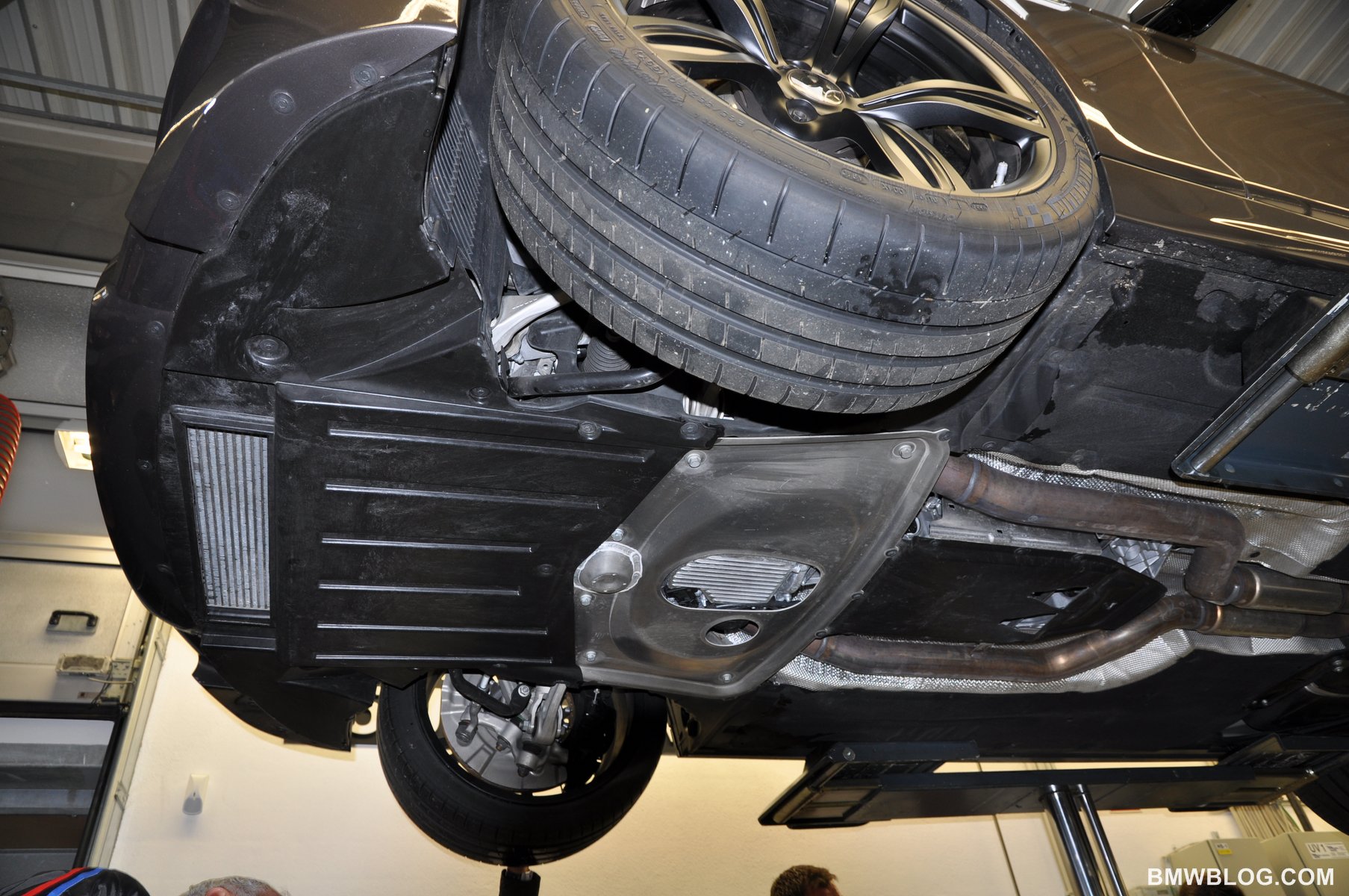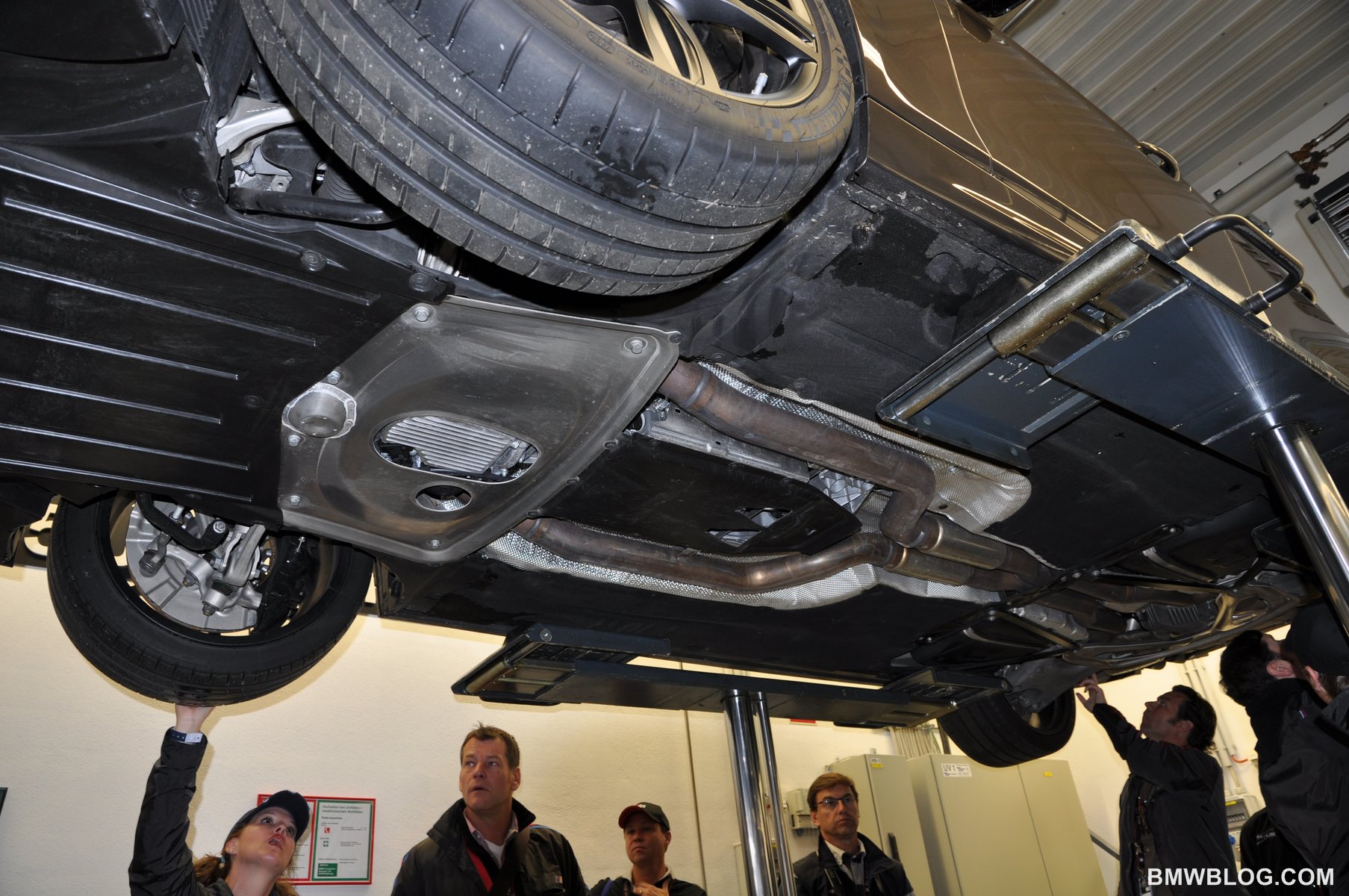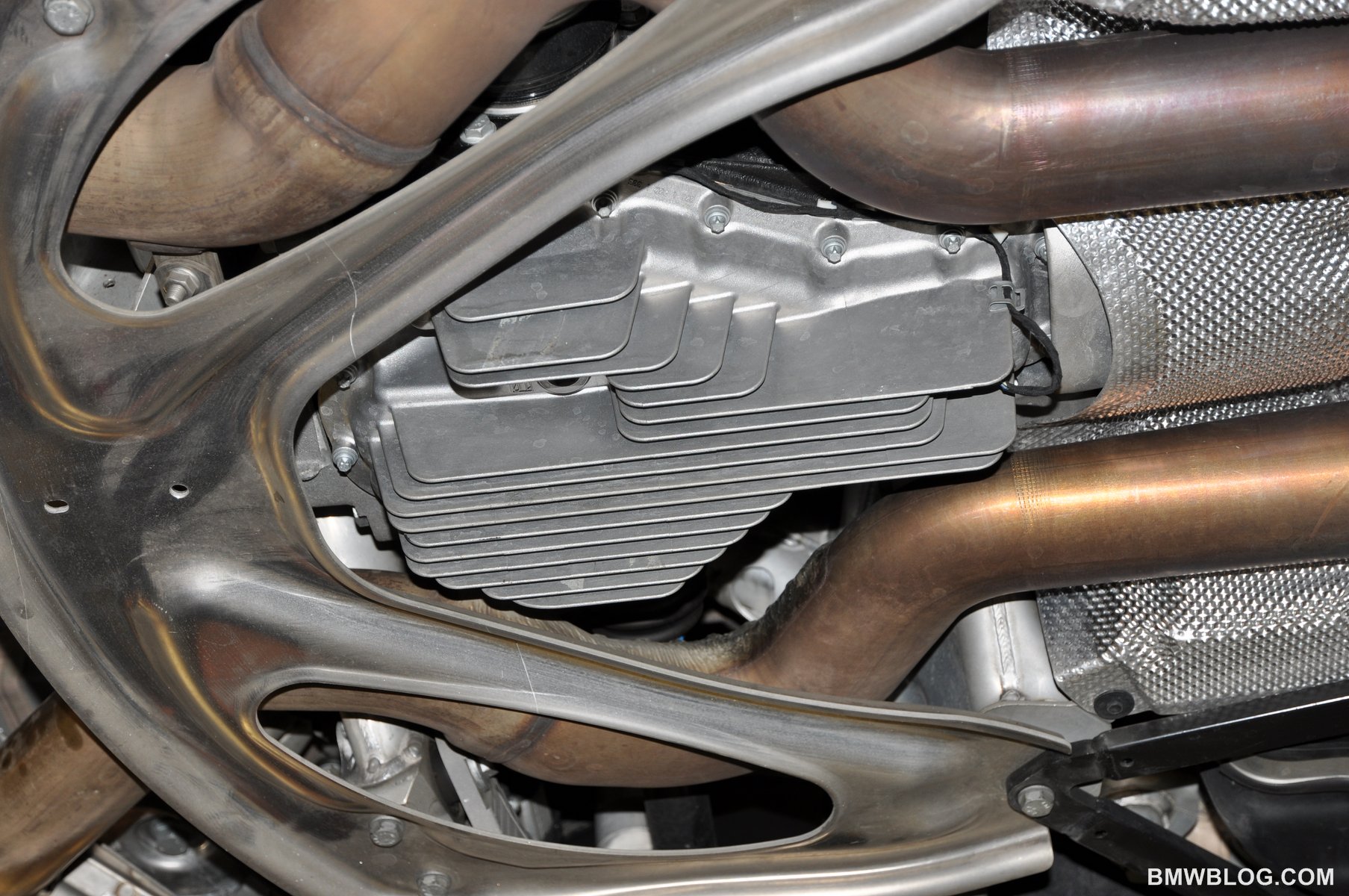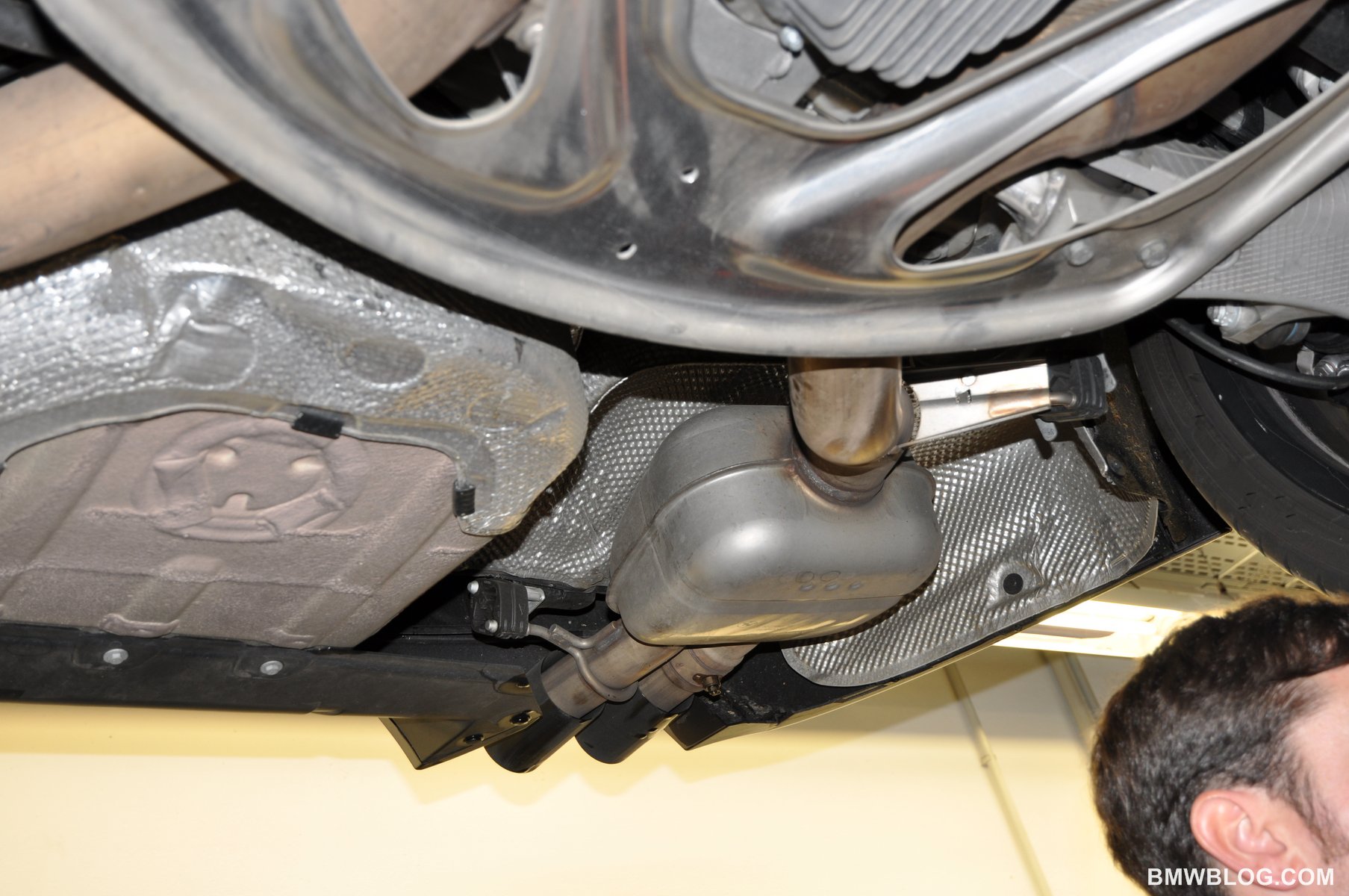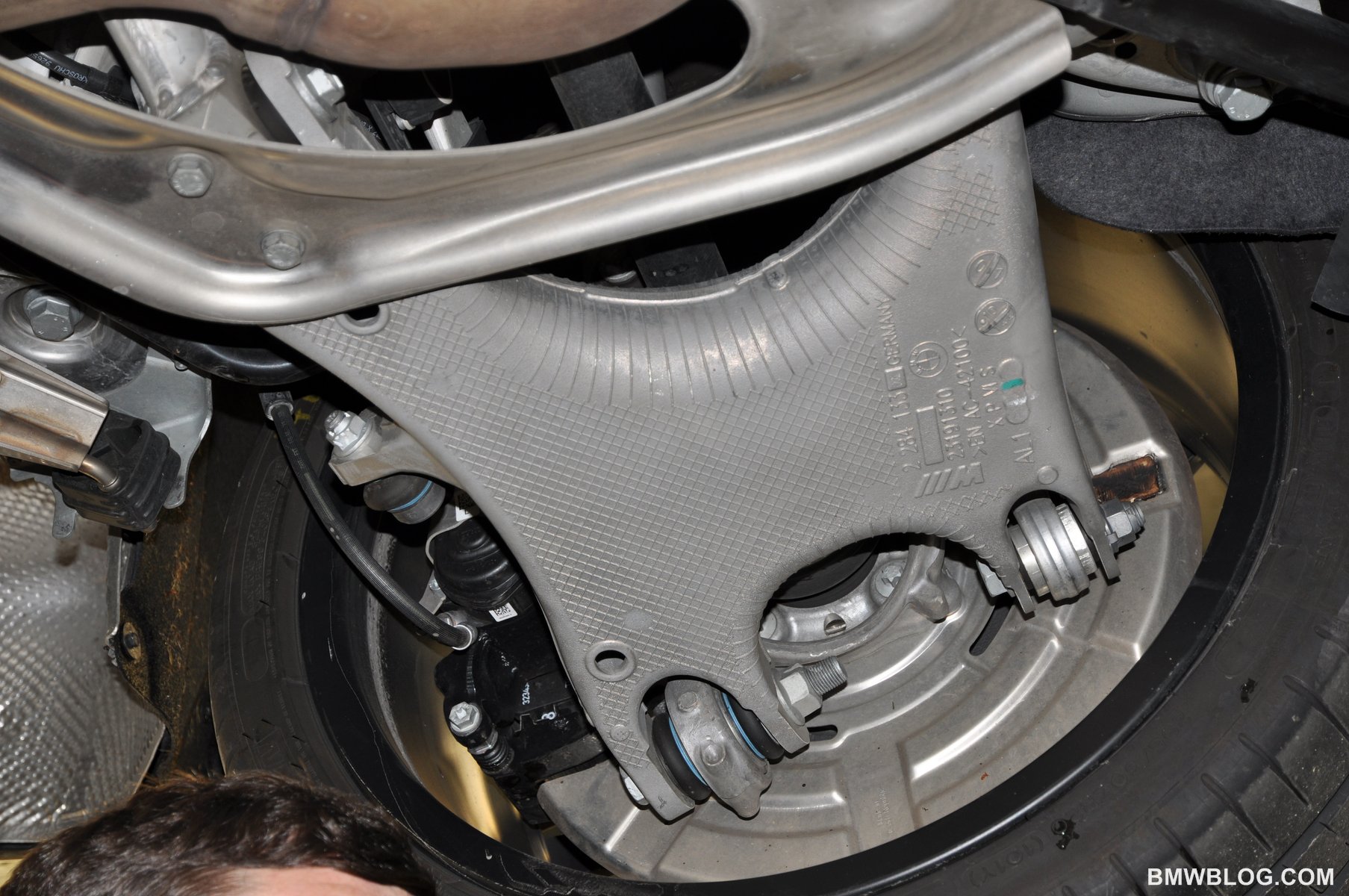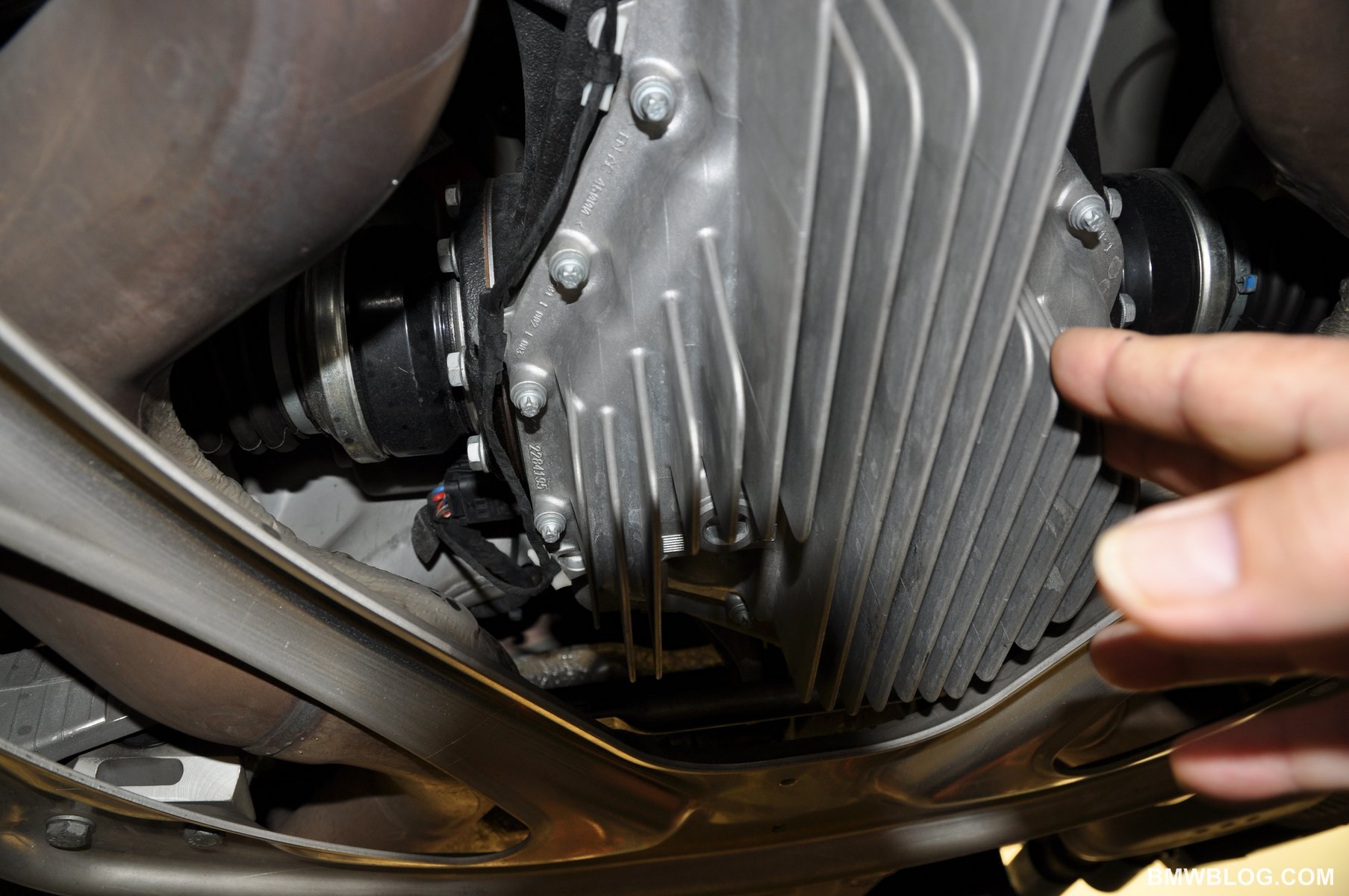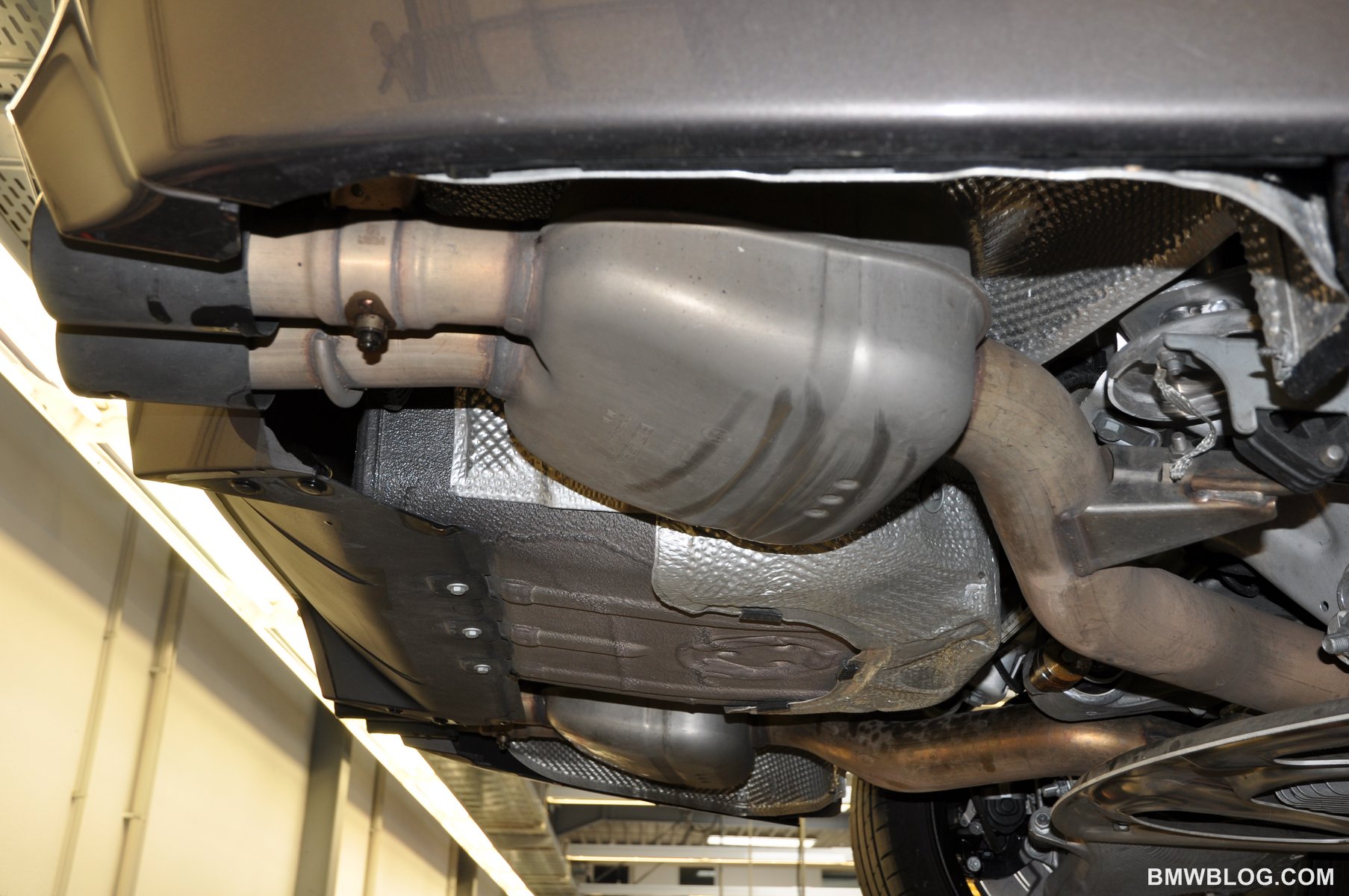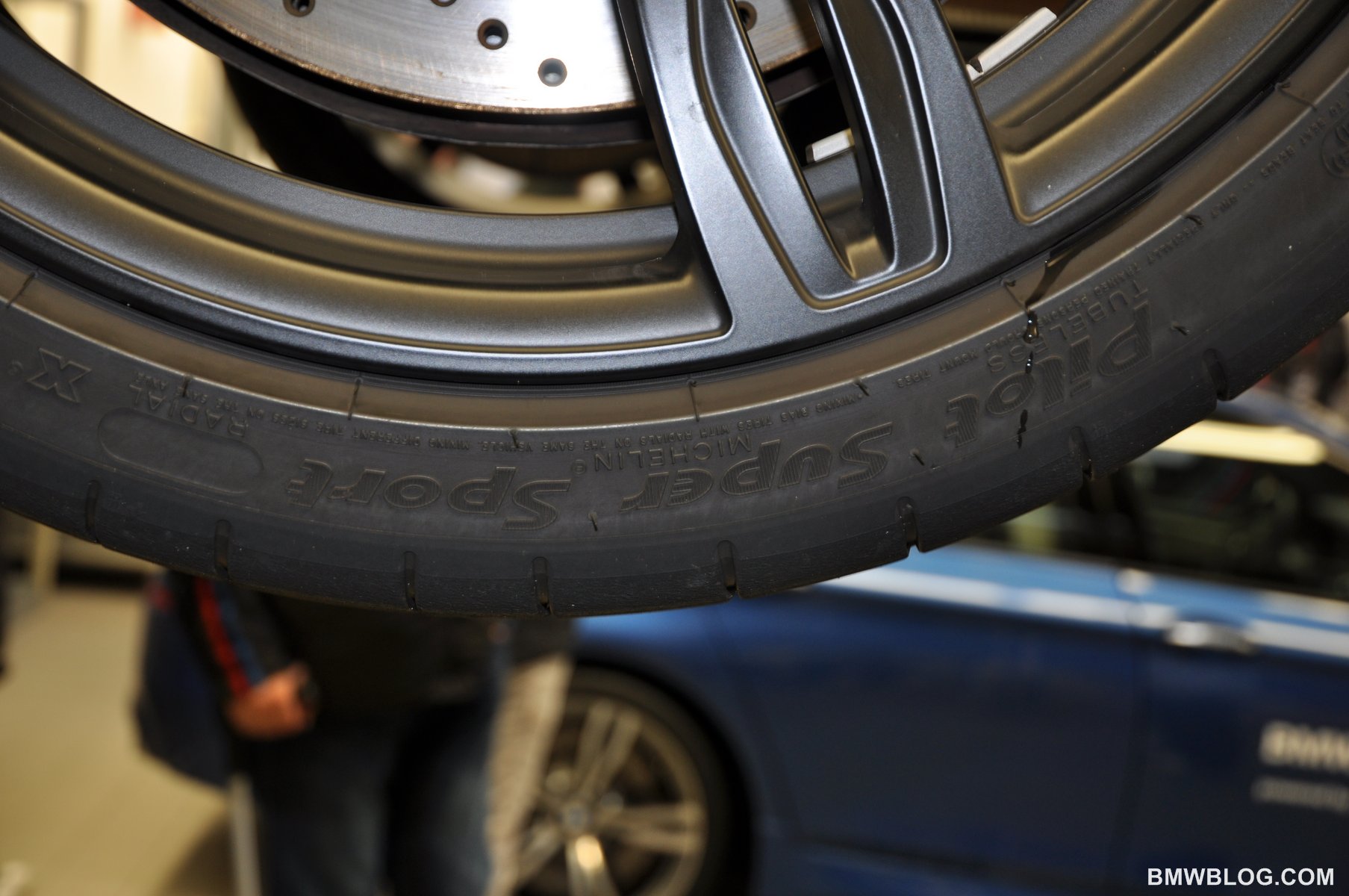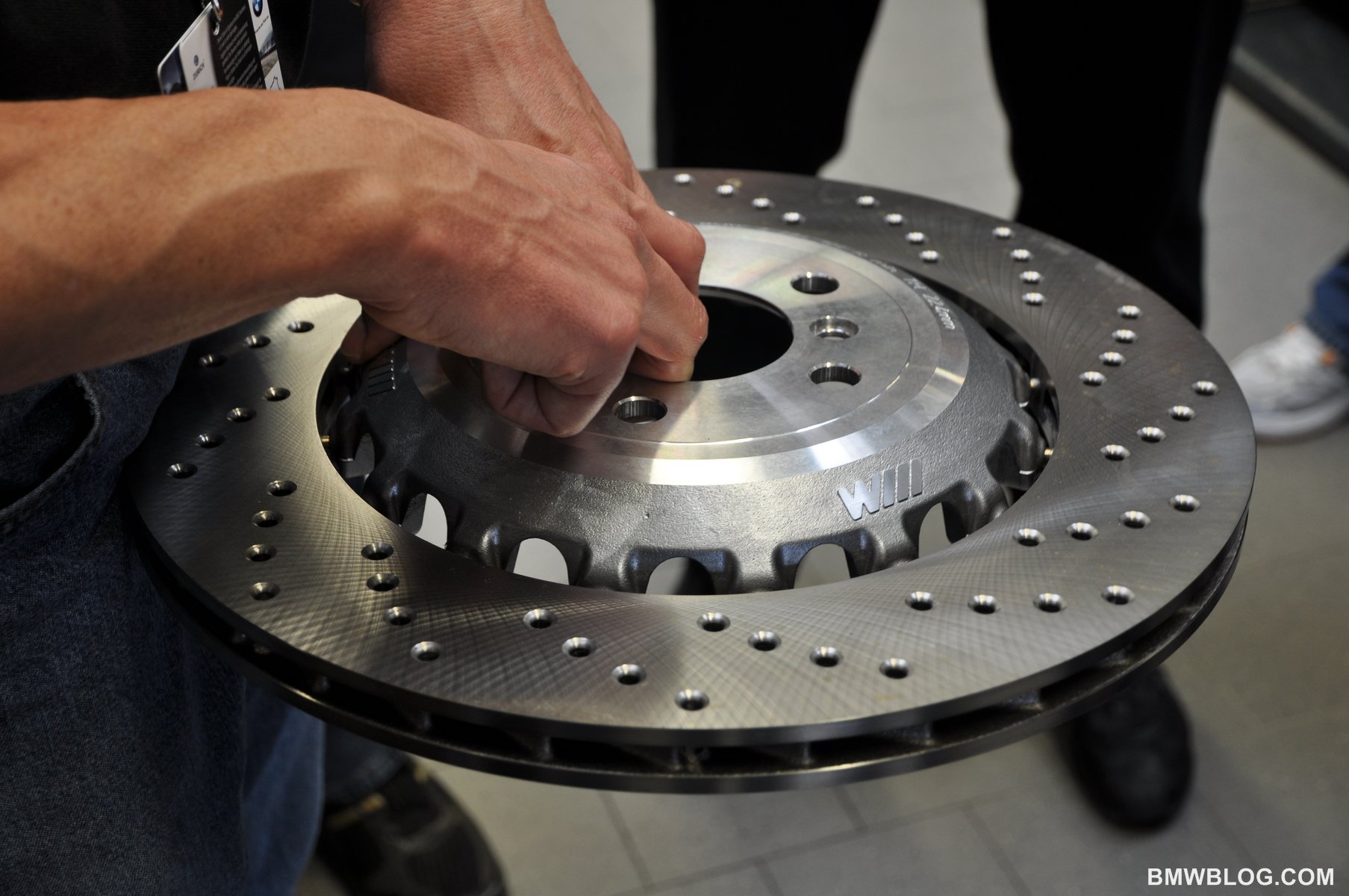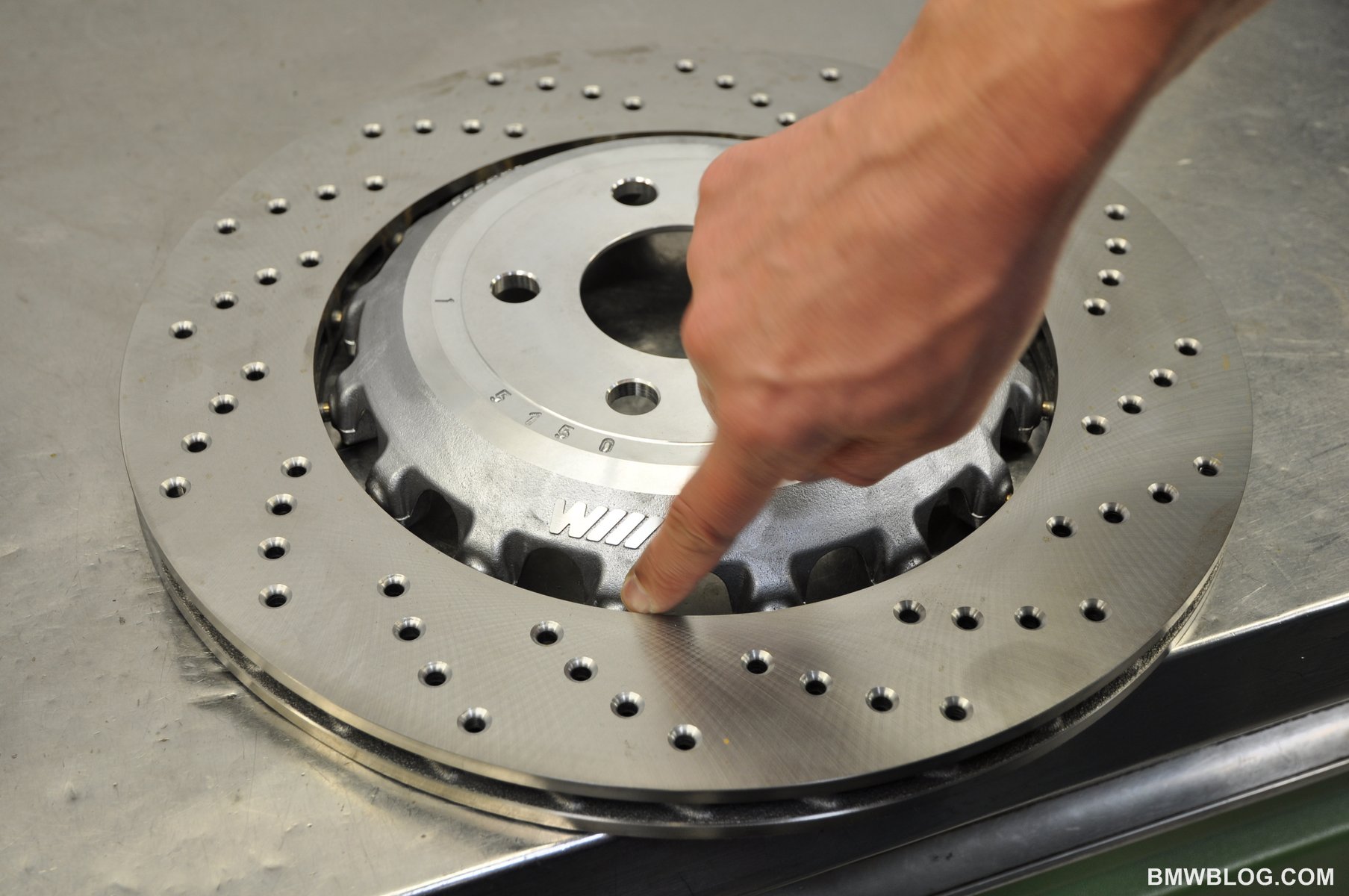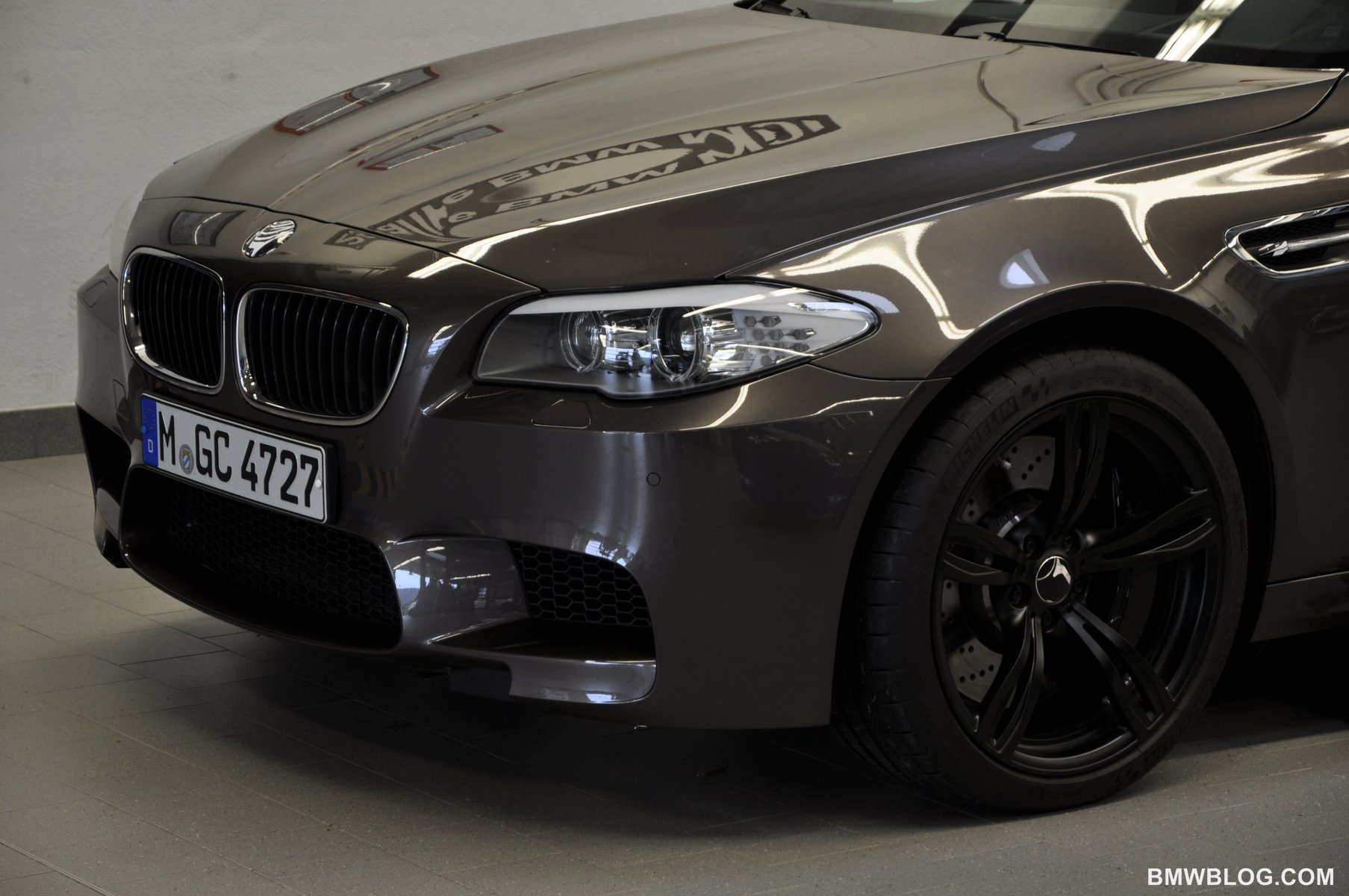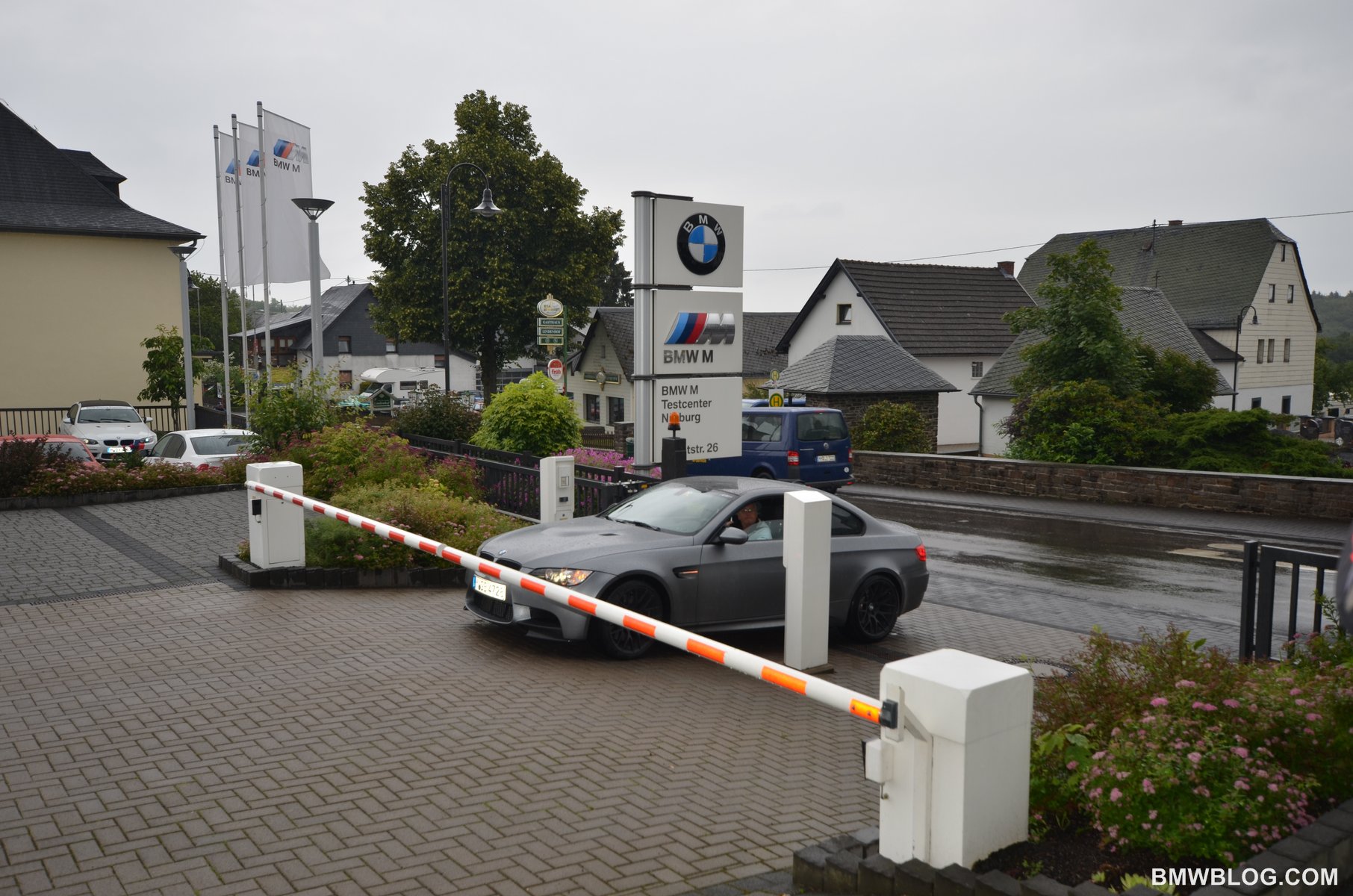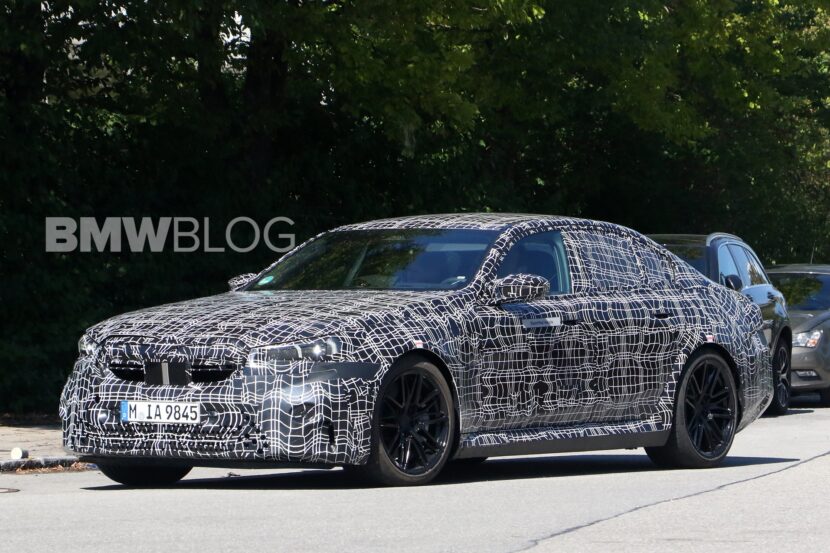At the BMW M Test Center located a stone’s throw from the Nurburgring Racetrack, BMWBLOG had the unique opportunity to view the underbody of the new M5 while up on a hoist. We also had the opportunity to learn of a few technical details about the car from Albert Biermann, BMW M Head of Engineering, while peering under the hood. We can confirm the following technical details about the new M5.
BMW’s F10 M5 will feature a rear sub-frame bolted directly to the frame. There will be no rubber or even urethane bushings to offer any cushioning, and as a result this typical race car setup will allow for direct, precise road feel from the rear. This setup will also contribute to the reportedly highly neutral (and highly driftable!) handling of the new M5.
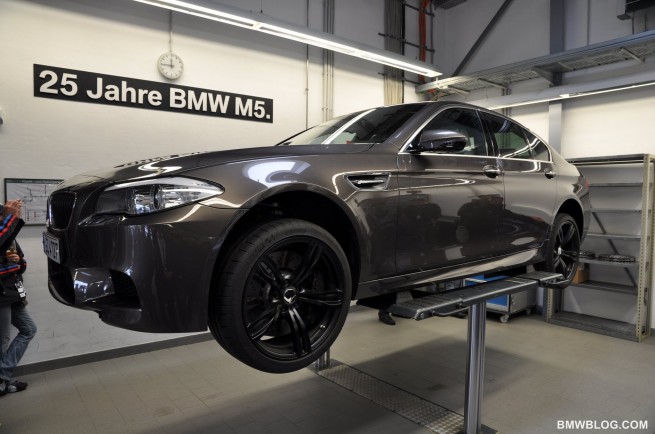 This radical chassis design highlight demonstrates BMW M’s aggressive approach with the new M5. It also speaks highly of the generic F10 5 series because this design solution is only permissible in conjunction with an extremely stiff frame – of which the new 5 series is the stiffest of the lot, second only to the X5.
This radical chassis design highlight demonstrates BMW M’s aggressive approach with the new M5. It also speaks highly of the generic F10 5 series because this design solution is only permissible in conjunction with an extremely stiff frame – of which the new 5 series is the stiffest of the lot, second only to the X5.
The new M5 will have a weight distribution of 51% front, 49% rear. The rear exhaust silencers are constructed of titanium and are far smaller than those featured on the series production car. Several kilograms were saved through the application of these silencers, thus the rear end was lightened considerably. As for the sound, we have been told the new M5 will have an exhaust note uniquely different from that of the S63 found in the X5M and X6M cars. In the words of M’s top engineer, it will sound more like a 4 cylinder race engine than a typical V8.
Speaking of the engine, BMWBLOG can confirm that the new M5 will be fitted with a new engine; it will not come equipped with the same engine as featured in the X5/X6 M cars. True, the block and many ancillary parts will be shared, but the head, turbo system and electronics will demonstrate a major departure from those found on the X5/X6M.
First of all, the turbo plumbing both on the intake and exhaust side have been significantly enlarged relative to the previously seen S63 such that engine breathing has been improved and back pressure has been reduced. The cross cylinder bank headers have themselves been increased in diameter for better breathing. The intercoolers are much larger and more pronounced under the hood. Boost pressure has been raised from 1.3 to 1.6 bar.
The valvetronic system has been heavily tuned and modified for the M5 such that turbo lag has been further reduced, and efficiency has been improved. On the test bench at full load the M5 engine shows a 30% improvement in efficiency over the S63 found in the X M cars while making the same power output.
We have heard an unconfirmed rumor that BMW has dialed back the full potential power output of the new M5 because while the engine has the ability to produce far more power (well over 600 hp), the crankshaft cannot handle the additional loads associated with the increased output. According to the rumor, BMW has looked at engineering a new crankshaft to handle the additional power, but for the time being, the costs overwhelm the budget. Thus, the design improvements over the S63 in the new X M cars will be translated into improved efficiency, while not increasing nominal power output. Needless to say, the lighter M5 (relative to the new X M cars) will still have “sufficient” power.
The M engineers have also significantly raised the RPM redline to 7,200 rpm, which makes this engine the highest revving turbocharged V8 production engine in existence behind only the new McLaren MP4-12C supercar.
The engine and gearbox have been mounted 20 mm lower in the frame to reduce the car’s center of gravity and improve handling. The engine has also been moved rearward to improve balance.
To slow it all down BMW have installed brakes which feature the combination of an aluminum hub with an outer steel rotor. The rotor is mounted to the hub via 16 steel pins which allow for up to 1 mm of expansion between the hub and rotor as they expand at varying rates based on their respective metallurgy.
The best part of this brake technology, besides the reduced un-sprung weight, is the clinking noise the pins make as the steel rotor cools and shrinks back in size. This exotic noise coupled with the ticking sound of the cooling engine and exhaust should provide a pleasant curb-side ambiance while admiring your new M5 after enjoying a spirited drive.
We have also heard that the new M5‘s aero package will produce no lift, but will not produce much down force, if any.
Please enjoy the following photo gallery showing various technical details of the new M5.


